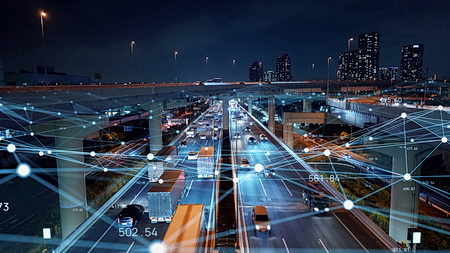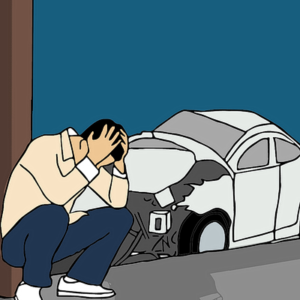
So you’re sitting in your car on the Long Island Expressway going nowhere and all you see are a parade of cars in front of you and behind you doing the same thing. From the Belt Parkway to the Long Island Expressway and from Brooklyn to Montauk, AI is coming to a town near you. So imagine quick moving vehicles on all Long Island roads, even during rush hour moving smoothly without interruption, getting you home 20 or 30 minutes or even an hour earlier? Well, imagine no more. The technology is here. It is just up to the municipalities to enable them!
Just some of the advancements coming to our way area.
Accident Detection

How many times have we witnessed an accident on a Long Island road or for that matter any road or highway in the NYC metro area? Now, AI-powered cameras and sensors are keeping a watchful eye on these thoroughfares, automatically recognizing accidents and other incidents that require assistance, whether that be a tow truck, police, or an ambulance.
This rapid response translates to faster clearing times, minimizing disruptions and preventing secondary accidents. What’s even more thought-provoking and where the intelligence of AI really comes in is that these algorithms can predict where incidents are likely to occur, based on previous historical data. This provides preventative measures from an otherwise potential horror show of traffic congestion.
Adaptive Traffic Lights

So you’re sitting at a red light on Hicksville Road or Sunrise Highway. You wait and wait and wait and no one has crossed the road and all vehicles with the green have come and gone, yet you wait and wait and wait. Finally, the light changes of which you thought that light should have changed to green about an hour ago.
No more. AI-powered systems are analyzing real-time traffic flow, and adjusting signal timings on the fly are coming. Studies have shown that these algorithms can help reduce waiting times by up to 30%. The only wait time now is when they will install it.
Google’s “Surplus Green” project, for example, has already shown significant success in various cities.
Dynamic Rerouting and Navigation
Stuck in a jam with no escape? Traditional navigation systems often turn a blind eye to real-time congestion. AI-powered navigation apps, however, are learning to think like savvy traffic cops. By analyzing live traffic data and factoring in weather, accidents, and construction zones, these apps can guide drivers around jams, suggesting alternative routes and optimizing travel times. Imagine navigating rush hour with the confidence of a seasoned local driver – that’s the future AI promises.
Connected Vehicles via the Internet of Things (IoT)
The future of traffic management doesn’t just involve analyzing data, it involves actively communicating with vehicles. If you think Waze is a helpful assistant (e.g. “Accident ahead”), just wait for Iot!
Vehicles will be AI connected so that they can share information about their speed, location, and even intent (changing lanes, stopping) with other vehicles on the roads and highways. This allows for coordinated traffic flow, reducing the risk of accidents and optimizing lane usage. What’s more, is that your car will seamlessly adjust its speed to maintain a smooth flow; ain other words, this IoT will be integrated into all vehicles in the future..
Predictive Maintenance and Infrastructure Management
Potholes, cracked pavement, and malfunctioning traffic lights can all turn minor inconveniences into major disruptions. New algorithms are being designed to analyze data from sensors embedded in the transportation infrastructure, identifying potential problems before they manifest.
This predictive maintenance approach allows for targeted repairs, minimizing disruption and extending the lifespan of infrastructure; subsequently, these roads will become self-aware, preventing problems before they even arise.
Summary
While the AI revolution in traffic control is still in its early stages, the potential benefits will promise to reshape the way we experience transportation. Privacy concerns around data collection, ethical considerations in algorithmic decision-making, and the integration of AI with existing infrastructure are all crucial issues that need to be addressed.
The success of AI in traffic control hinges on collaboration between tech companies, policymakers, and the public. As we navigate this technological shift, one thing is clear: the days of idling at red lights and battling gridlock may soon be a thing of the past, replaced by an era of smooth, efficient, and intelligent transportation. The future of traffic is on the move, and AI is leading the way.